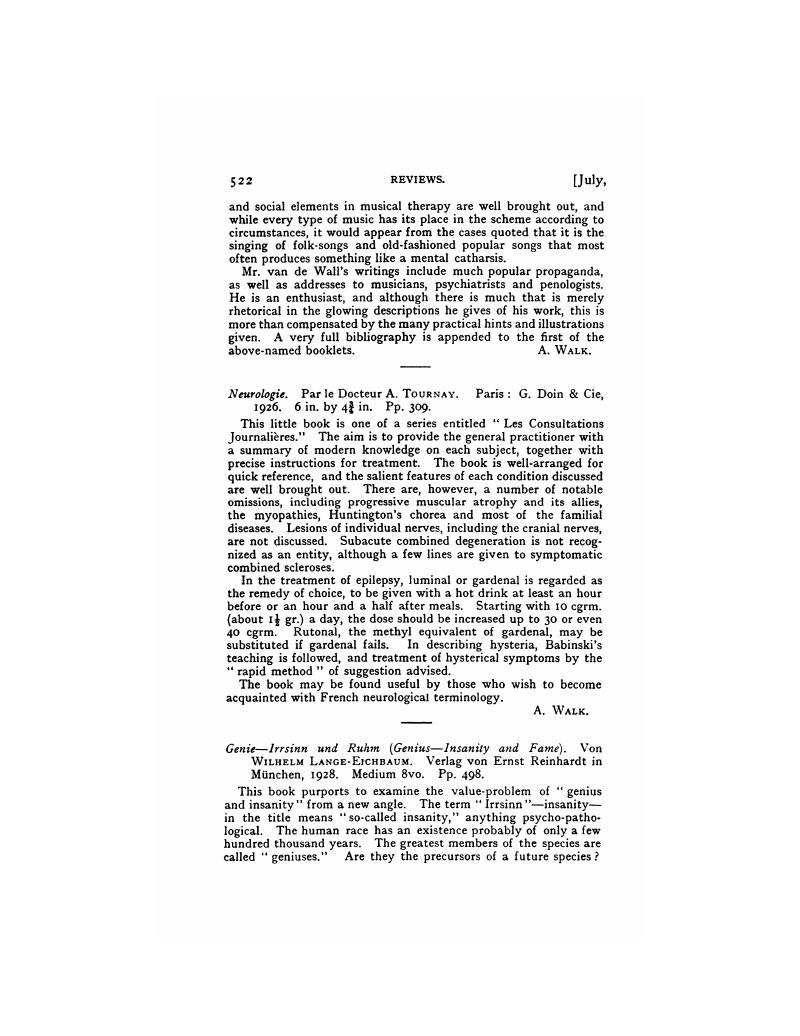No CrossRef data available.
Article contents
Genie—Irrsinn und Ruhm (Genius—Insanity and Fame). Von Wilhelm Lange-Eichbaum. Verlag von Ernst Reinhardt in München, 1928. Medium 8vo. Pp. 498.
Published online by Cambridge University Press: 19 February 2018
Abstract

- Type
- Part II.—Reviews
- Information
- Copyright
- Copyright © Royal College of Psychiatrists, 1928
References
∗ I have searched high and low in lexica and dictionaries for a definition, but in. vain. L. evidently takes the term from R. Otto's Das Heilige. He says: “Lmeet attempt to describethe pre-sacred(? pre-Holy—Vor-Heiligoer)the ‘Numinous’ (Numinose) accordingto R. Otto. Otto is concerned with con ceiving the sacred (? Holy) without the moral, the sacred (? Holy) not equivalent to good, but minus good. … The Hebrew Quadosch and the Latin Sacer correspond approximately to this moment. In the beginnings of the development of this moment all these terms signify doubtless something totally different than the good. Otto triesto finda name which, first fixes, it in its peculiarity, and secondly, makes it possibleto distinguish possible varieties or stages of development to fit. This ‘Mories’ the Numinous. ‘Dies Mehr ist das Numinose.’ The six different forms of the ‘Impressive’ which L. distinguishe, viz., majestas, mirum, tremendum, etc., are moments of the Numinous. I have not read Otto's book; be may be clearer than Lange. I am inclined to think that Otto coined. the word from the Latin numen, numinis, the Divine power,etc.Google Scholar



eLetters
No eLetters have been published for this article.